The importance of grounding
What is Grounding?
Grounding refers to connecting the neutral point, shell or bracket of the equipment and electrical device with the grounding device by conductor. This is the way to prevent electric shock and equipment damage.

Function of grounding
1.Grounding technology was originally introduced to prevent electrical equipment from being struck by lightning because it can introduce the lighting current to the earth directly.
2.Grounding is also a way to protect personal safety. When the phase line caused by some reasons (such as poor insulation of the wire, aging of the line, etc.) are connected with the shell of the equipment, then there will be danger if someone touch the shell. However, the grounding can prevent this from happening.
Function of Grounding
(1)Prevent Electric Shock
The human’s resistance is affected by the environment. The wetter the environment, the lower the body's resistance and the more vulnerable it is to get electric shocks. Grounding is an effective way to prevent it. When the electrical equipment is grounding, the potential of the electrical equipment is close to the ground potential. Due to the existence of grounding resistance, electrical equipment always exists on the ground potential. When the fault occurs, the greater grounding resistance of electrical equipment, the greater potential of electrical equipment, then the greater risk when people touch it. Besides, If there is no grounding, there will be more danger.

(2)Ensure the normal operation of power system
The grounding of a power system, also known as working grounding, is normally grounded at the neutral point in a substation or substation. The grounding resistance of working grounding is very small, and a grounding grid is required for large substations to ensure that the grounding resistance is small and reliable. The purpose of working grounding is to make the potential between the neutral point of the grid and the ground close to zero.

(3)Protection against lightning and static electricity
Thunder, besides direct thunder, still can produce inductive thunder, inductive thunder also divides for electrostatic induction thunder and electromagnetic induction thunder. When lightning occurs, the overhead line through the overvoltage protector (arrester) to discharge the lightning energy through the grounding line on the ground. If not, it is easy to damage the equipment (such as vacuum circuit breaker). Therefore, the main method of lightning protection is reliable grounding.
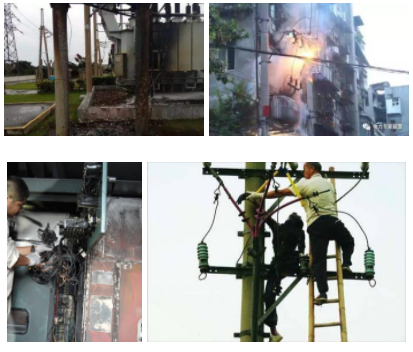
Arrangement of Grounding
In order to make the equipment in normal use, it is necessary to arrange grounding reasonably. When there is electric leakage or lightning strike, reasonable grounding can effectively avoid certain accidents and reduce the failure rate and accident rate.
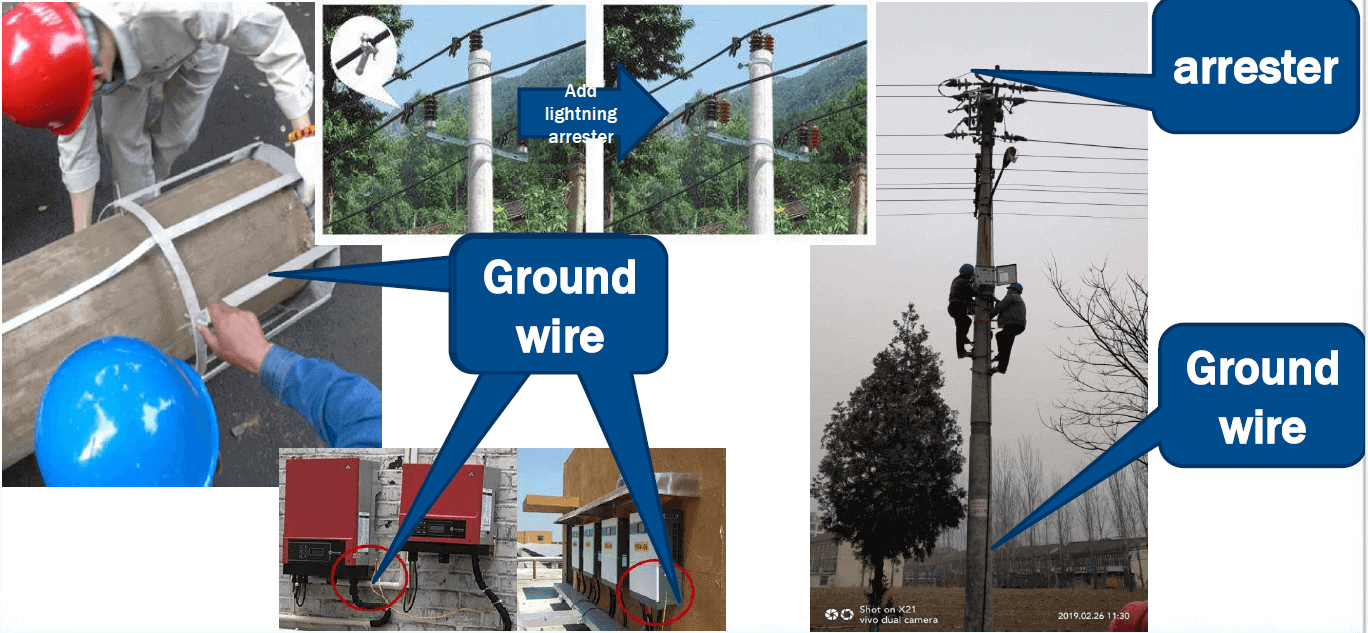
Lightning protection grounding is a part of lightning protection measures, whose function is to introduce lightning current to the earth. Generally, the poles and the side of the tower on the distribution line are equipped with grounding, as shown in the figure:
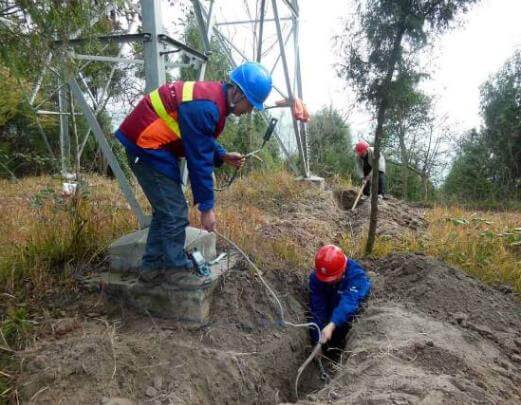 |
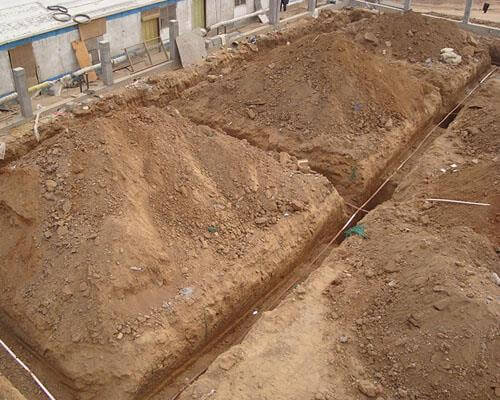 |
| Layout grounding wire | Layout grounding net |
Measurement of Grounding Resistance
When the grounding set up, the grounding resistance measurement also should be done to meet the standard. Different ground has different grounding resistance, and just try to do small resistance and meet local standards as well.
Measurement of Grounding Resistance:
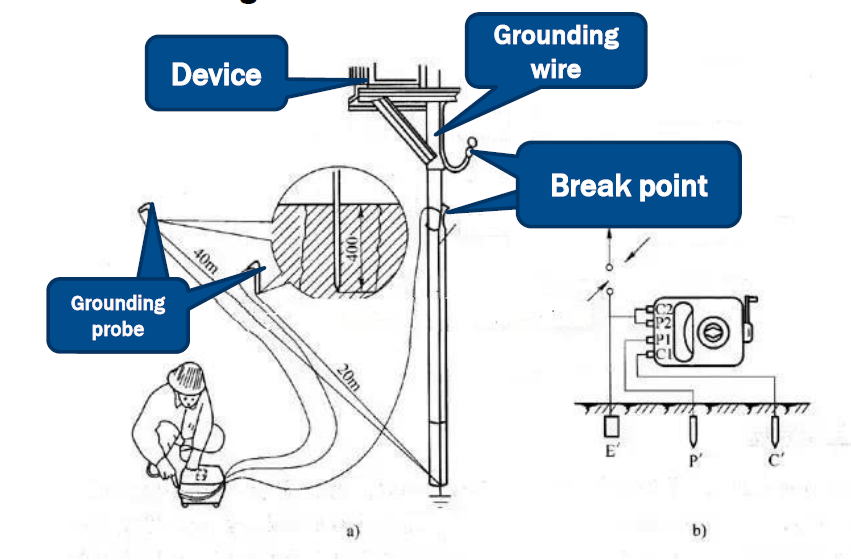
Field Measurement of Ground Resistance
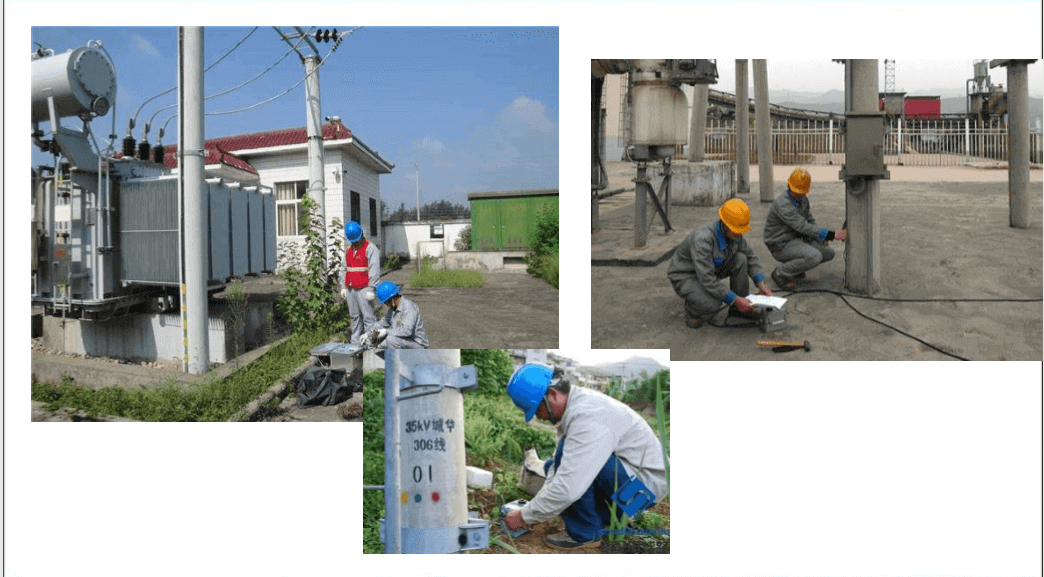
Having Grounding Wire
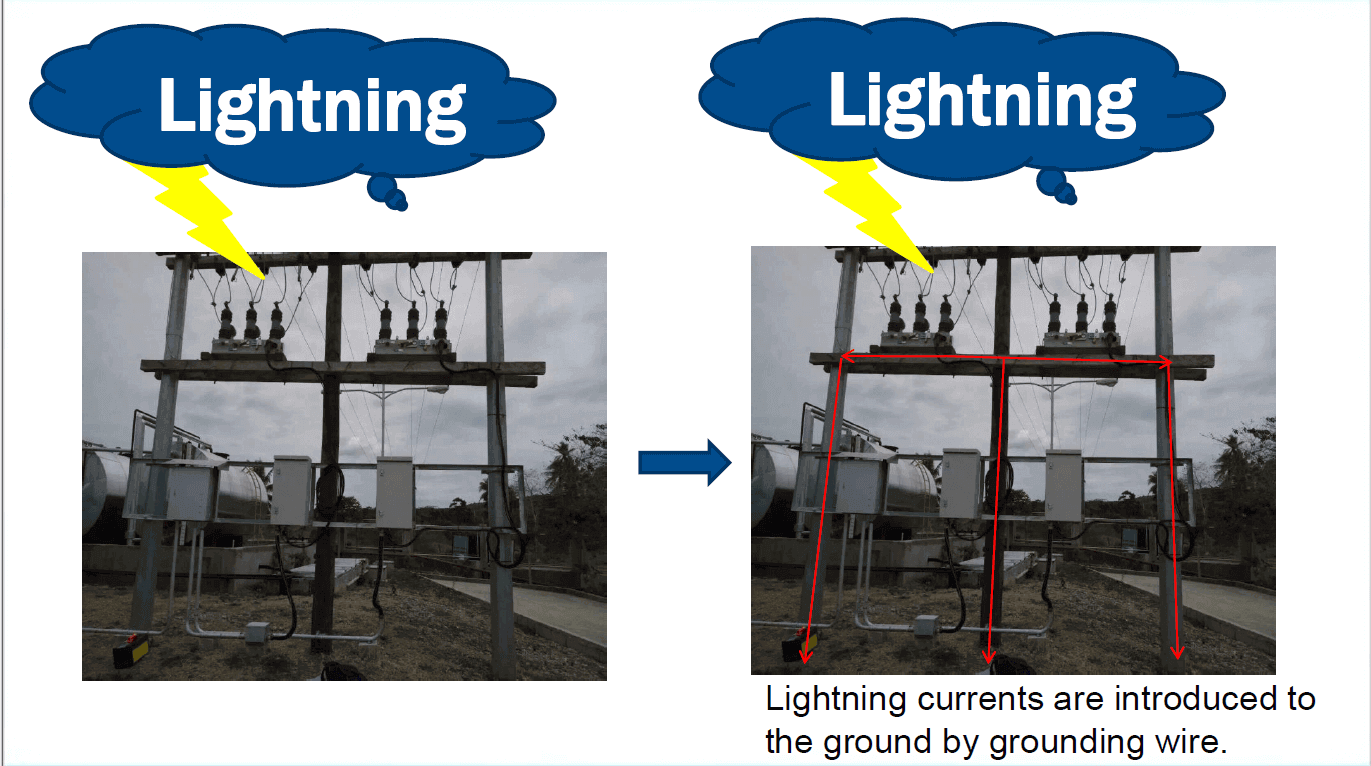
No Grounding Wire
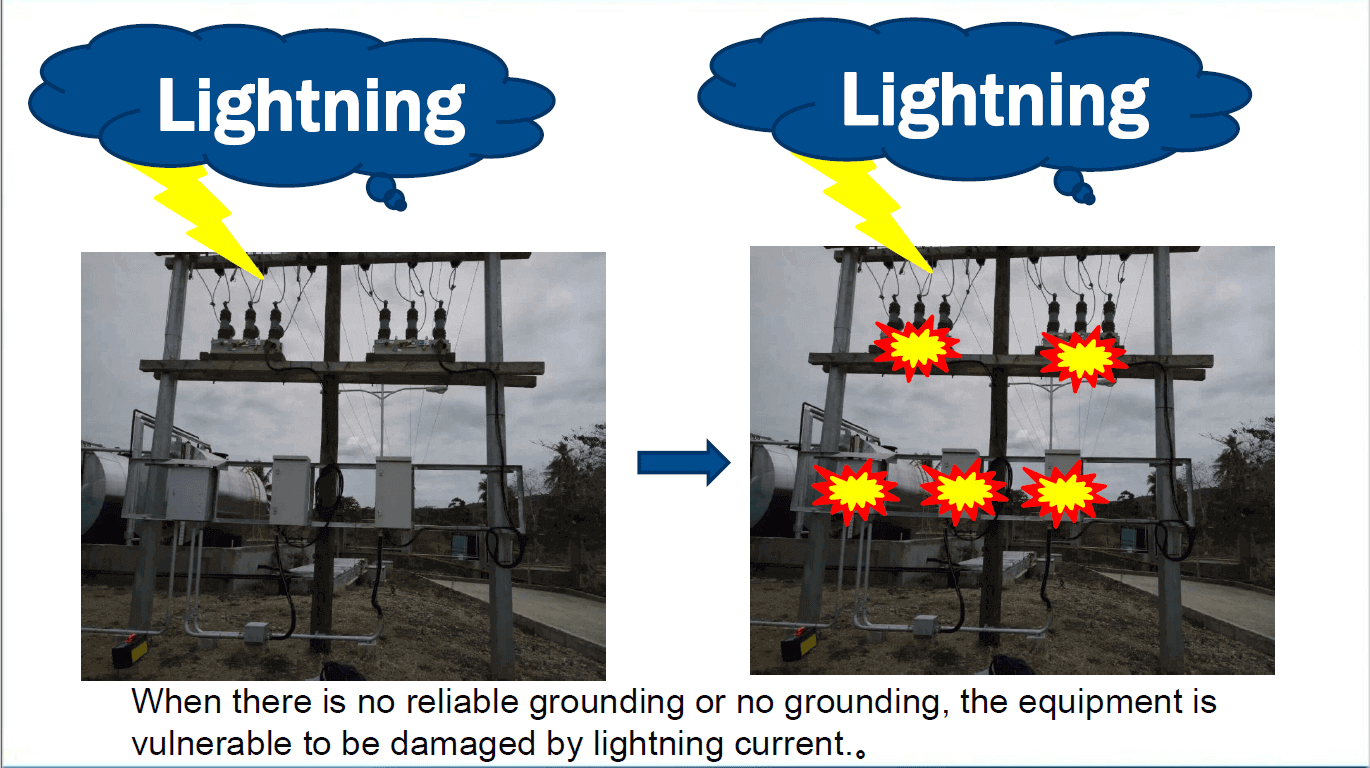
Primary Line Fault Caused by Lightning
Whether it is direct lightning or induced lightning, it is easy to cause a fault of the equipment. When there is no reliable grounding of the equipment, it is more likely to cause a fault. When there is lightning, the lightning current on the line does not get a good discharge which leads to an overvoltage damage of the equipment.

Secondary Line Fault Caused by Lightning
It is easy to cause secondary equipment fault no matter it is direct lightning or induced lightning. Moreover, the secondary equipment is more likely to cause fault if there is no reliable grounding. When there is lightning, the lightning current on the circuit does not discharged well which leads to the overvoltage of secondary equipment and damages the circuit board components.
